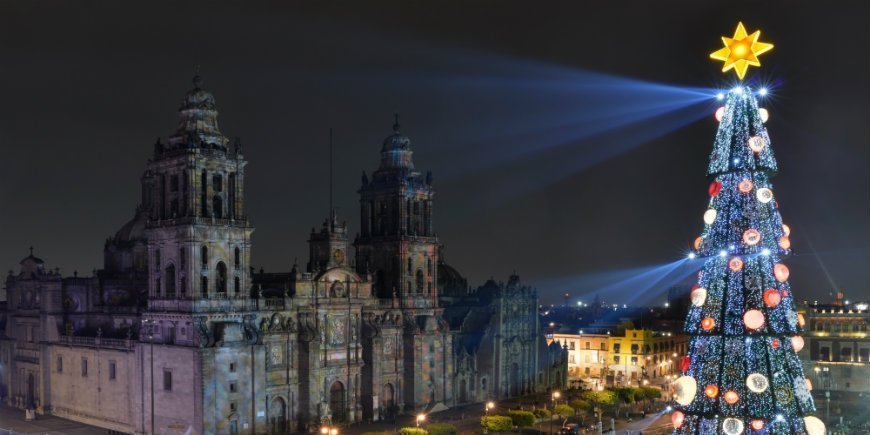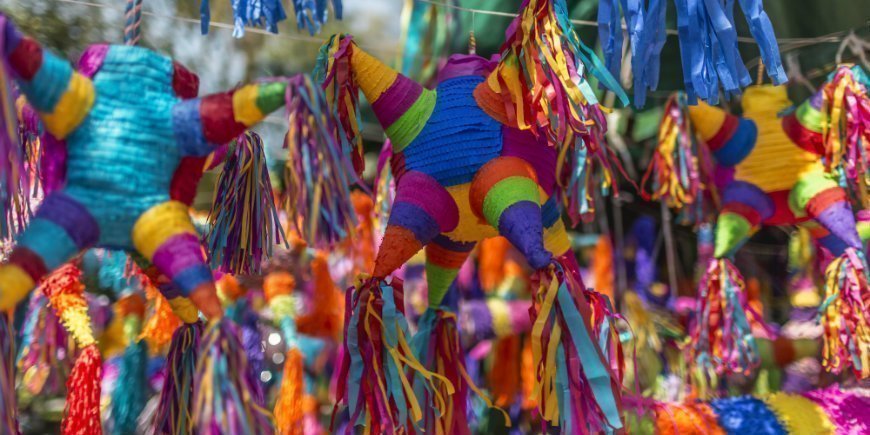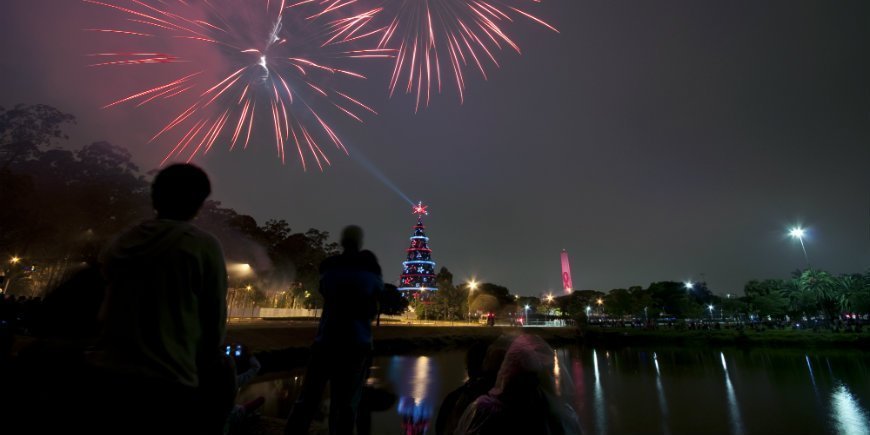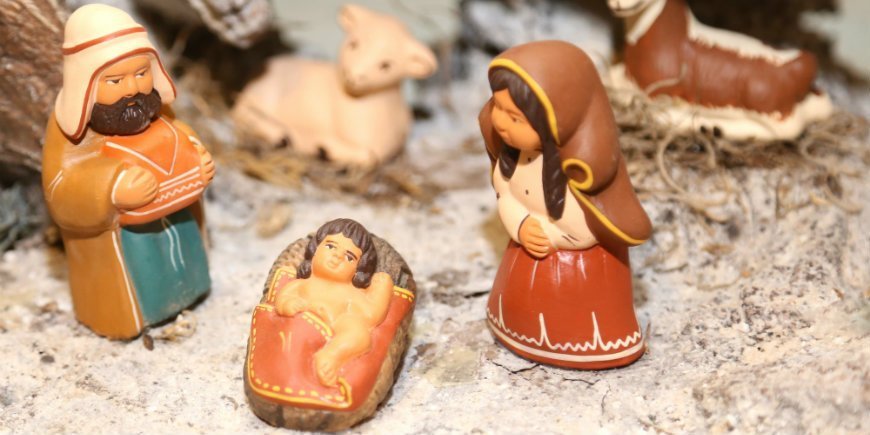- Home
-
Our tours
- Our tours
- Africa
- Asia
- Latin America
- North America
- Oceania
- Holiday types
-
Accommodation
- Accommodation
- Africa
- Asia
- Latin America
- North America
- Oceania
-
Practical info
- Practical info
- Africa
- Asia
- Latin America
- North America
- Oceania
- Info & contact
- Blog
Christmas in Latin America
16.11.2017
In Latin America, Christmas Eve is known as Nochebuena in Spanish, and Véspera de Natal in Portuguese.
And just as in the UK, each country in Central and South America has some wholly unique Christmas traditions.
When Spain and Portugal were colonial powers, they brought their religion and traditions over the Atlantic, to South America. This is why the majority of populations in the Latin American countries are Catholic today. But the mix of Catholicism and their already existing cultures has created some completely unique Christmas traditions.
Christmas traditions in Latin American countries
In Latin America, Christmas is marked by religious celebrations and festive parades.
- On Christmas Eve, families gather for Christmas dinner, and let the Christmas cheer settle in. At midnight, most families head to mass, after which the evening finishes with a fireworks show.
- Many families go to the midnight mass, called La Misa de Gallo in Latin America. The legend behind the name states that a rooster cried when Jesus was born.
- A key part of the Christmas celebration is the nativity scene. Many Central and South American countries have age-old traditions with this Christmas fixture, which they call nacimientos.
Although the Latin American countries share many identical traditions, there are still difference between the individual countries.
Christmas plays and piñatas in Mexico

Christmas in Mexico starts on the 16th of December with a posada. A posada is the story of Joseph and Mary seeking a place to stay on the day she was to give birth to Jesus. The audience is split into two groups, and go outside to sing the posada song, which is about seeking a place to stay. On Christmas Eve, the last posada is staged.
Aside from the characteristic posada, the nativity scene, as in the rest of South America, and the piñata play a key role. Piñatas may be shaped like a seven-pointed star, where each point represents one of the seven deadly sins. Piñatas are made of papier-mâché or clay, and are filled with candy. Children play the piñata game blindfolded, and attempt to puncture the figure so all the candy comes out.
For Mexicans, Christmas Eve is also a day for family. After the final posada play, they have Christmas dinner, after which they go to the midnight mass. Finally, Christmas is celebrated with fireworks, as in many other South American countries.
The Three Wise Men and lanterns in Argentina
Like many other South Americans, Argentinians begin their Christmas preparations as early as December 8th. Although they are preparing for Christmas, Argentinians stay in air conditioned rooms, as this is the hottest time of the summer. Though you can also experience colder climates in Argentina, if you go to Patagonia, for instance.
Christmas is decorated with garlands of green, gold and red hues, while the front door is adorned with a wreath bearing white flowers. These Christmas decorations also include the nativity scene, and slightly more alternative decorations, where cotton balls serve as white snowflakes.
At midnight, after an outdoor Christmas dinner and mass, Christmas day is rung in with gorgeous colours in the sky. Around midnight, paper lanterns, called globos, are launched into the sky. The lights symbolise the birth of Christ and the star over Bethlehem. Christmas Eve, or Nochebuena, concludes with fireworks.
On January 6th, the Three Wise Men come bearing gifts for the children of Argentina. The children put their shoes by their beds, by the door or under the Christmas tree. They then leave hay and water at the door so the Wise Men’s horses can leave with their stomachs full and their thirst quenched.
Father Christmas and twinkling Christmas trees in Brazil

In many ways, the Brazilian Christmas traditions are reminiscent of the Western ones. Father Christmas, or Papai Noel, brings gifts, although he is not as famous as in the UK. Just as in the UK, Christmas is also a family event in Brazil.
But when it comes to decoration, the country stands out. The massive fireworks show blasts off, but that’s not the only thing that flashes with colour. Brazilians have a love of electric and vividly colourful Christmas trees. Not to be outdone by the fireworks, they glow in all sorts of colours.
The morning after Christmas Eve, families go to the beach to relax and enjoy the company of each other and the sun.
Don’t miss the Christmas plays, known as Los Pastores, which focus on female shepherds and a gypsy. In the plays, the gypsy attempts to steal away the infant Jesus.
Many reasons to celebrate in Costa Rica
In December, Christmas is right around the corner, and the school year is close to an end in Costa Rica. And that is why there are even more occasions for a joyous time of celebration.
Entire Ticos families, as the Costa Rican population is called, decorate their homes for the festivities, often using nativity scenes, flowers, and wreaths with red coffee berries.
In Costa Rica, Father Christmas isn’t the one who brings Christmas presents on Christmas Eve, it’s the infant Jesus himself. The next morning, children open their gifts, and the El Tope celebration begins. The event, which is broadcast all over the country, is simply about horses parading the streets of San José as far as the eye can see. Many dress in cowboy attire, and the day of El Tope is a big tradition in Costa Rica.
In December, Ticos also celebrate the Festival de la Luz, the festival of light. The event takes place in San José, and is a relatively new Christmas tradition, having started in 1996. The festival includes music, parades, masquerades and fireworks.
Christmas lights and fireworks in Colombia
The celebration of Christmas does not go unnoticed in Latin America!
One of the main ingredients in the celebration of the Christmas month is light. And the city of Medellín in northern Colombia is home to a vast collection of artificial Christmas lights. Christmas decoration is hugely popular throughout Colombia, but it is a particularly beautiful sight in this city where the Medellín River and city’s parks are a veritable paradise of light.
In addition to the beautiful sea of artificial lights, a wonderful experience awaits on the evening of 7 December, when Little Candles Day is celebrated. The Colombians put candles out on the road in front of their homes so that the Virgin Mary can find her way to their house and bless them.
Besides the great significance of the lights in the Christmas celebration, prayer also holds a special place. Every day from 16 December until Christmas Eve, families and friends gather for prayer, songs and food. This event is known as “novena”.
After the celebration, however, it’s time for something completely different. On 28 December, it’s time to make a fool of one another! It’s like our April Fools’ Day and even the worst joke is welcome.
Sacred Christmastime in Peru

Peru is a highly Catholic country, and Christmas is considered to be a particularly sacred time. It is said that Peru was the site of the very first Christmas celebration in all of Latin America.
Christmas is far from being as materialistic as it is in the UK, for example, Father Christmas is banned in the country.
As in the rest of this part of the world, the nativity play is very important – albeit even more important in Peru. And the Peruvian version has a twist. The infant Jesus resembles a Peruvian family. And next to the family of the Peruvian nativity play are the animals, including the llama, which is considered to be a reliable animal, and which is often associated with Peru. When Christmas Eve comes, a child is chosen to play the Infant Jesus in the manger.
Gifts that are exchanged during this holiday, are exchanged around the nativity play, and in some parts of the country, gifts aren’t opened until Three Kings’ Day, on January 6th. So here, children need the patience of a saint.
Celebrate Christmas in Latin America!
If you would like to celebrate Christmas in a different way than before, then Latin America is a good place for a Christmas getaway that you will remember for a long time.
As described, you will encounter new and exciting Christmas traditions in these countries. After the midnight mass and Christmas fireworks, there are many people outside, and you will have great opportunities to experience traditions up close.
Feliz Navidad and Feliz Natal!
TourCompass – From tourist to traveller
